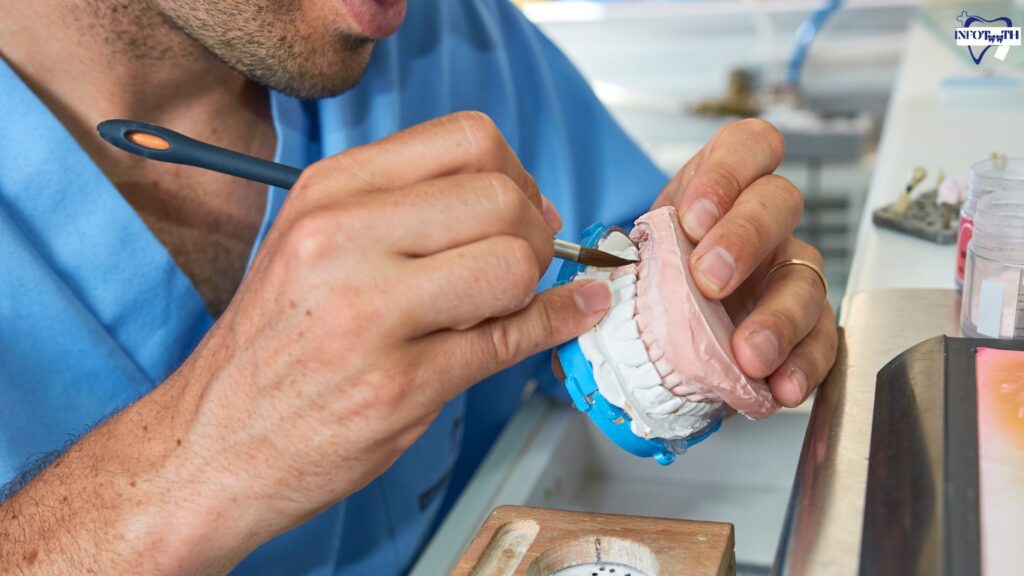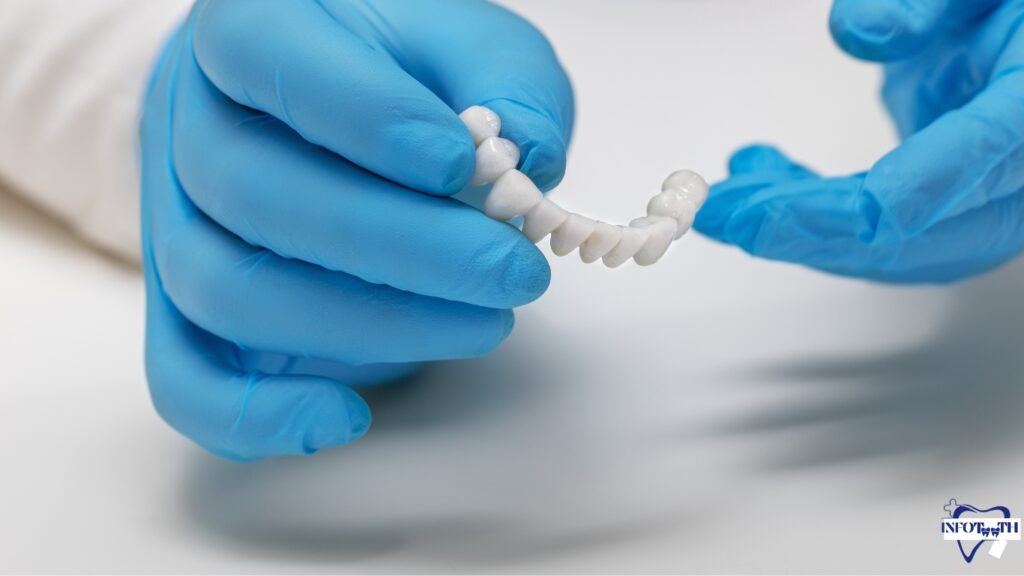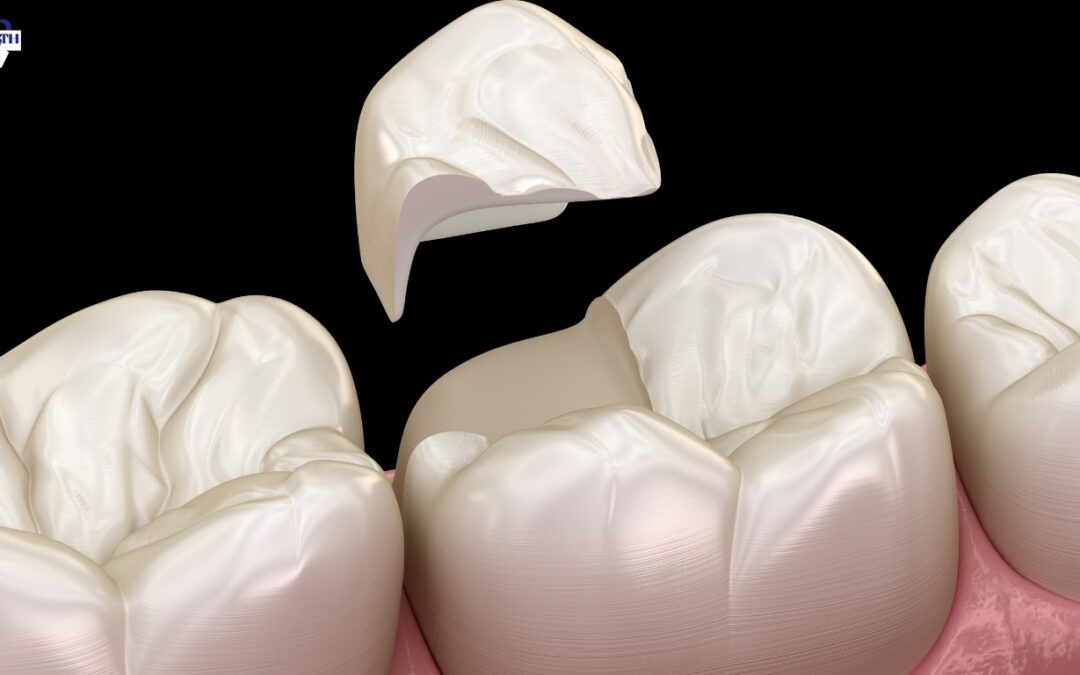Welcome to our blog exploring the fascinating world of Ceramic Teeth. As an increasingly popular option in dentistry, these teeth offer a natural aesthetic, durability, and biocompatibility. In this space, we delve into the intricacies of ceramic dental restorations, their benefits, and considerations. Whether you’re a dental professional seeking insights or a curious reader eager to understand the advancements in dental technology.
Table of Contents
Join us on a journey through the art and science of ceramic teeth.
What Is The Process of Getting Ceramic Teeth?
The process of obtaining these teeth involves a meticulous and personalized approach to enhance the aesthetics and functionality of a patient’s smile. These are, also known as porcelain teeth, have gained popularity for their natural appearance and durability. The journey towards obtaining ceramic teeth typically begins with a comprehensive consultation with a dentist or prosthodontist.
During the initial consultation, the dentist assesses the patient’s oral health, discusses their aesthetic goals, and determines the suitability of these teeth for their case. If ceramic teeth are deemed appropriate, the dentist proceeds with the preparation phase. This involves removing a thin layer of enamel from the natural teeth to create space for the ceramic crowns or veneers.
Following tooth preparation, the dentist takes precise impressions of the patient’s teeth. These impressions serve as the foundation for crafting custom-made ceramic restorations that seamlessly blend with the patient’s natural teeth. Advanced technologies, such as computer-aided design and manufacturing (CAD/CAM), may be employed to ensure accuracy and precision in creating ceramic teeth.
Once the ceramic restorations are fabricated, the patient returns for the final placement. The dentist carefully bonds the ceramic crowns or veneers to the prepared teeth, making necessary adjustments to achieve optimal fit and bite. The result is a radiant and natural-looking smile that enhances both the appearance and function of the patient’s teeth.
Throughout the process, patient communication is crucial to ensure satisfaction and address any concerns. Regular check-ups and proper oral hygiene practices contribute to the longevity of ceramic teeth, providing patients with a durable and aesthetically pleasing dental solution.
How Ceramic Bridge Teeth Works?
Ceramic bridge teeth have revolutionized the field of restorative dentistry, offering a durable and aesthetically pleasing solution for individuals seeking to replace missing teeth. These bridges are composed of advanced ceramic materials, such as zirconia or porcelain, known for their strength, biocompatibility, and natural appearance. The article delves into the intricacies of ceramic bridge teeth, highlighting their unique properties and the benefits they bring to dental patients.
One key advantage of ceramic bridge teeth is their remarkable resemblance to natural teeth. The material mimics the clarity and color of real teeth, ensuring a seamless blend with the patient’s existing dentition. This aesthetic quality not only enhances the patient’s smile but also boosts their confidence.

Furthermore, ceramic bridge teeth exhibit exceptional durability. The robust nature of these materials ensures longevity, resisting wear and tear over time. Additionally, their biocompatibility reduces the risk of allergic reactions or adverse effects within the oral cavity.
The article sheds light on the meticulous fabrication process involved in creating ceramic bridge teeth, emphasizing the importance of precise measurements and customization to achieve optimal results. As the demand for aesthetically pleasing and durable dental solutions rises, the exploration of ceramic bridge teeth in the “Ceramic Teeth” article underscores their pivotal role in modern dentistry.
What Is The Ceramic Cap For Teeth?
Ceramic caps for teeth, commonly referred to as dental crowns or ceramic teeth, represent a significant advancement in restorative dentistry. These caps are meticulously crafted from high-quality ceramic materials to emulate the natural appearance of teeth, providing both aesthetic appeal and functional restoration. The article delves into the various aspects of ceramic caps, shedding light on their pivotal role in dental procedures.
Ceramic caps serve a dual purpose, enhancing the visual appeal of a smile while reinforcing the structural integrity of damaged or decayed teeth. The article delves into the precise process of customizing ceramic caps to match the unique contours and coloration of a patient’s existing teeth, ensuring a seamless and natural look. Furthermore, it explores the durability and longevity of ceramic caps, emphasizing their resistance to staining and wear.
The piece delves into the benefits of ceramic caps, such as their biocompatibility and minimal impact on surrounding tissues. It may also touch upon the role of ceramic caps in cosmetic dentistry, addressing issues like discoloration, misalignment, or irregularities. In essence, these teeth provides a comprehensive exploration of how these dental advancements contribute to both oral health and the restoration of a confident, radiant smile.
What Are Ceramic Teeth Implants?
Ceramic teeth implants represent a groundbreaking advancement in dental technology, offering a durable and aesthetically pleasing alternative to traditional dental implants. This innovative approach involves the use of ceramic materials, often zirconia, to create artificial teeth that closely mimic the natural look and feel of real teeth. The article delves into the transformative impact of ceramic teeth implants on modern dentistry.
One key advantage of ceramic teeth implants lies in their biocompatibility, reducing the risk of allergic reactions and promoting a seamless integration into the jawbone. Unlike traditional metal implants, ceramic implants eliminate the concern of corrosion or metallic taste, enhancing the overall patient experience. Moreover, the natural translucency of ceramic materials allows for a remarkably realistic appearance, ensuring that the replacement teeth blend seamlessly with the patient’s natural dentition.

The article delves into the durability of teeth implants, emphasizing their resistance to staining and wear over time. Patients can enjoy not only a restored smile but also the confidence that comes with long-lasting and aesthetically pleasing dental solutions. As the field of ceramic dentistry continues to evolve, the article sheds light on the potential for further advancements, solidifying ceramic teeth implants as a forefront option in the realm of dental restoration.
Ceramic Teeth Vs Porcelain
Ceramic and porcelain teeth are two common options in restorative dentistry, both offering durability and aesthetic appeal. Ceramic are a broad category that includes various materials, with one popular choice being porcelain. While the terms are sometimes used interchangeably, it’s essential to understand the nuances between ceramic and porcelain teeth.
Porcelain teeth, a type of ceramic, are known for their natural appearance and clarity, closely resembling natural teeth. They are a popular choice for dental crowns, veneers, and bridges due to their ability to mimic the light-reflecting properties of natural tooth enamel. Porcelain is a ceramic material made from a mixture of clay, feldspar, and other components, fired at high temperatures to achieve a strong and aesthetically pleasing result.
On the other hand, the term “ceramic teeth” encompasses a broader range of materials, including not only porcelain but also materials like zirconia. Zirconia ceramic teeth have gained popularity for their strength and durability, making them a suitable option for dental restorations in high-stress areas of the mouth.
Choosing between ceramic and porcelain teeth depends on various factors, including the patient’s specific needs, the location of the restoration, and personal preferences. While porcelain teeth excel in replicating the natural look of teeth, ceramic options like zirconia offer enhanced strength. Dentists work closely with patients to determine the most suitable material based on individual considerations, ensuring optimal function and aesthetics in dental restorations.
What Are The Ceramic Teeth Disadvantages?
Ceramic teeth, while praised for their aesthetic appeal and durability, are not without their disadvantages. One prominent drawback lies in their susceptibility to chipping and fractures. Despite being resilient, ceramic teeth are more prone to damage compared to traditional alternatives like metal or porcelain-fused-to-metal crowns. This vulnerability can be attributed to the inherent brittleness of ceramics, making them less forgiving under extreme biting forces or accidental impacts.
Another notable disadvantage is the wear on the opposing natural teeth. Ceramic teeth, though highly resistant to stains and discoloration, can cause increased abrasion on adjacent teeth over time. This can lead to accelerated wear and potential damage to the natural dentition, necessitating additional dental interventions.

Furthermore, the cost associated with these teeth remains a significant concern. The materials used in their fabrication, such as high-quality porcelain or zirconia, contribute to a higher overall expense compared to traditional alternatives. This financial aspect may deter some individuals from opting for ceramic restorations, especially if more affordable options are available.
Conclusion
In conclusion, the advancements in teeth that are ceramic have revolutionized modern dentistry, offering a durable and aesthetically pleasing alternative to traditional materials. With their natural appearance, enhanced strength, and biocompatibility, ceramic teeth address both functional and cosmetic aspects of dental restoration. As technology continues to evolve, these innovations pave the way for improved oral health outcomes and patient satisfaction. The enduring appeal of teeth underscores their significance in shaping the future landscape of dental prosthetics and treatments.
FAQs
Q: What are ceramic teeth, and how do they differ from traditional dental materials?
A: These are refer to dental restorations, such as crowns or veneers, made from ceramic materials. This FAQ addresses the basic definition of ceramic teeth and explores the distinctions between ceramics and other common dental materials.
Q: What are the advantages of choosing these teeth for dental restorations?
A: This question aims to highlight the benefits of opting for ceramic teeth, discussing factors such as aesthetics, durability, and biocompatibility. It can also cover aspects like stain resistance and the ability to mimic natural tooth appearance.
Q: Are these teeth suitable for everyone, or are there specific cases where other materials may be recommended?
A: This FAQ delves into the candidacy criteria for ceramic teeth, exploring whether certain dental conditions or patient preferences make other materials more suitable. It can touch upon factors like cost, the patient’s oral health, and specific dental needs.
Q: How long do these teeth typically last, and what maintenance is required to ensure their longevity?
A: This question addresses the durability and lifespan of ceramic teeth, offering insights into the expected longevity of these dental restorations. Additionally, it covers the maintenance practices patients should adopt to maximize the lifespan of their ceramic restorations.
Q: Can ceramic teeth be used for both cosmetic and functional dental procedures?
A: This FAQ explores the versatility of these teeth by examining their applicability in both cosmetic and functional dental treatments. It can discuss scenarios where these teeth are commonly used, such as in crowns for damaged teeth or veneers for cosmetic enhancements.

